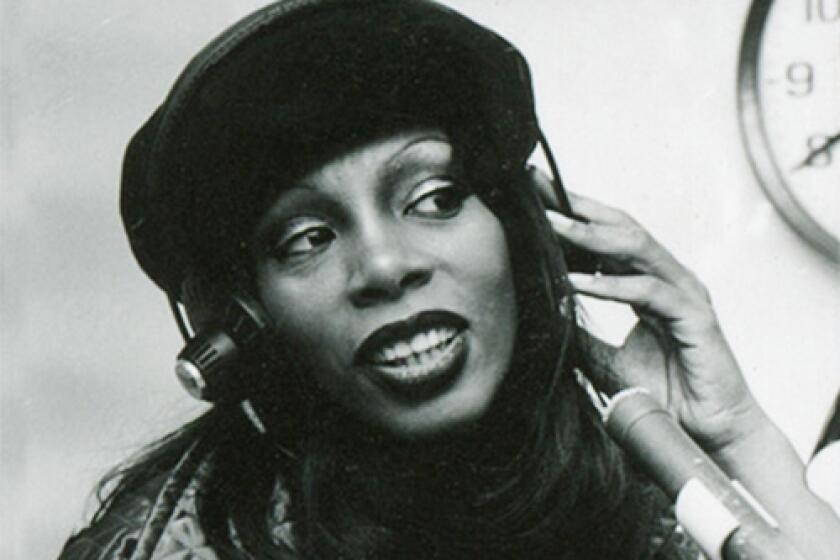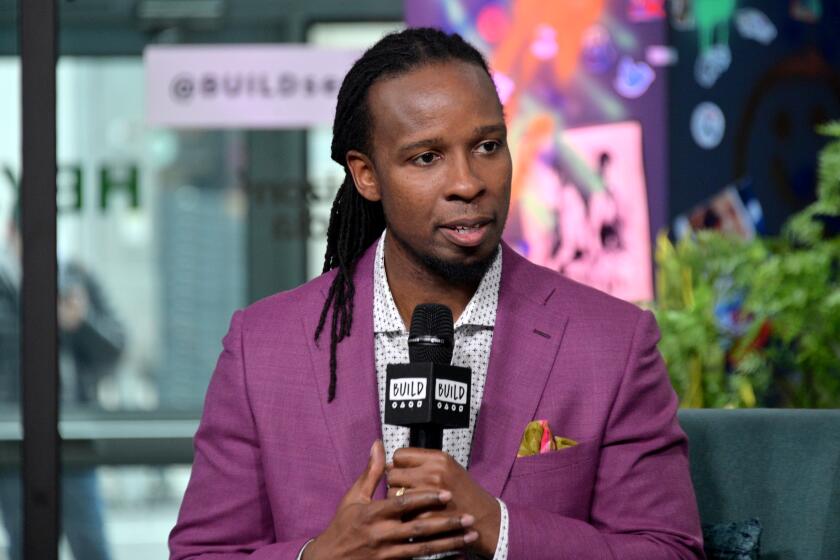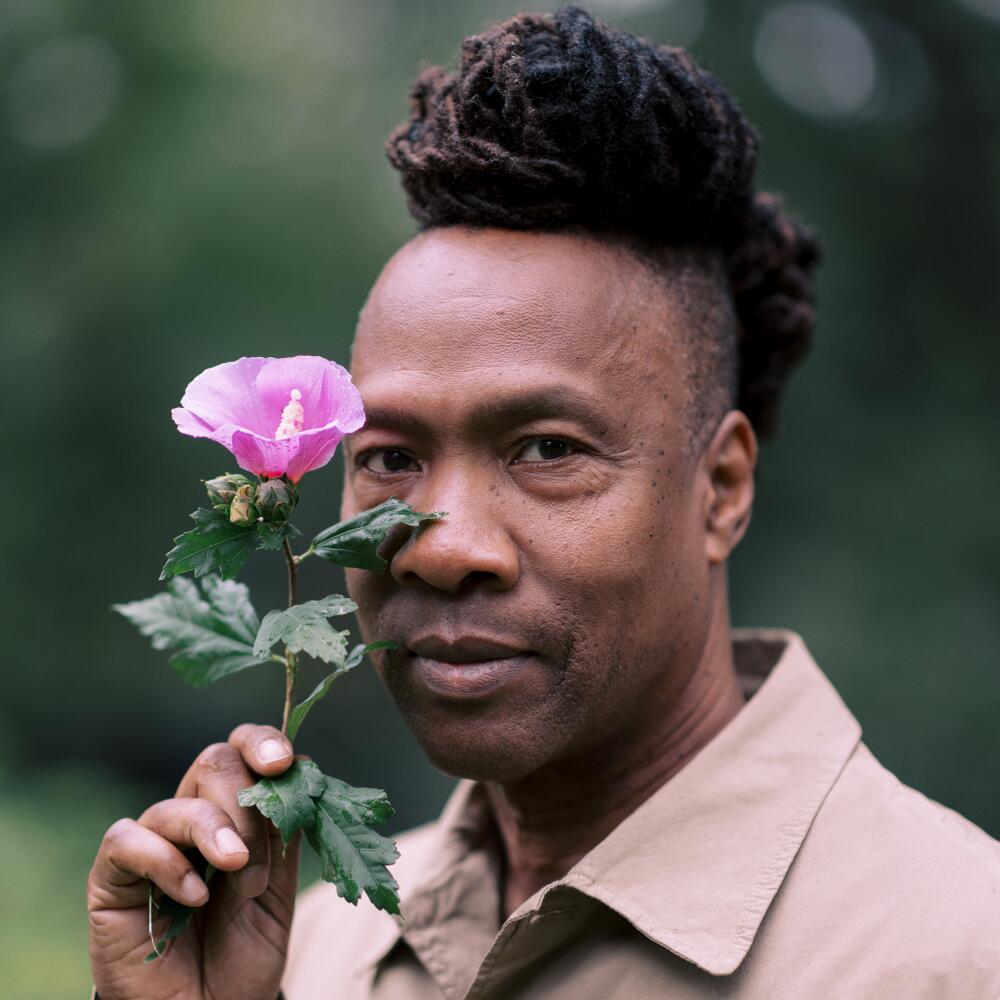
- Share via
There is prolific, and then there is Roger Ross Williams.
The Oscar-, Emmy- and Peabody Award-winning filmmaker, who became the first African American director to win an Academy Award in 2009 with his short film “Music by Prudence” (and earned another Oscar nomination for 2016’s “Life, Animated”), already co-helmed an acclaimed doc about disco diva Donna Summer and directed episodes of “The 1619 Project” this year. In September he returns with three more high-profile film and TV projects, all arriving within the span of a month.
First, with the Netflix docuseries “Stamped From the Beginning” (premiering Sept. 9 at the Toronto Film Festival ahead of its fall streaming debut), Williams examines the origins of racism in America and why the past remains painfully present, adapting “How to Be an Anti-Racist,” author Ibram X. Kendi’s book of the same name.
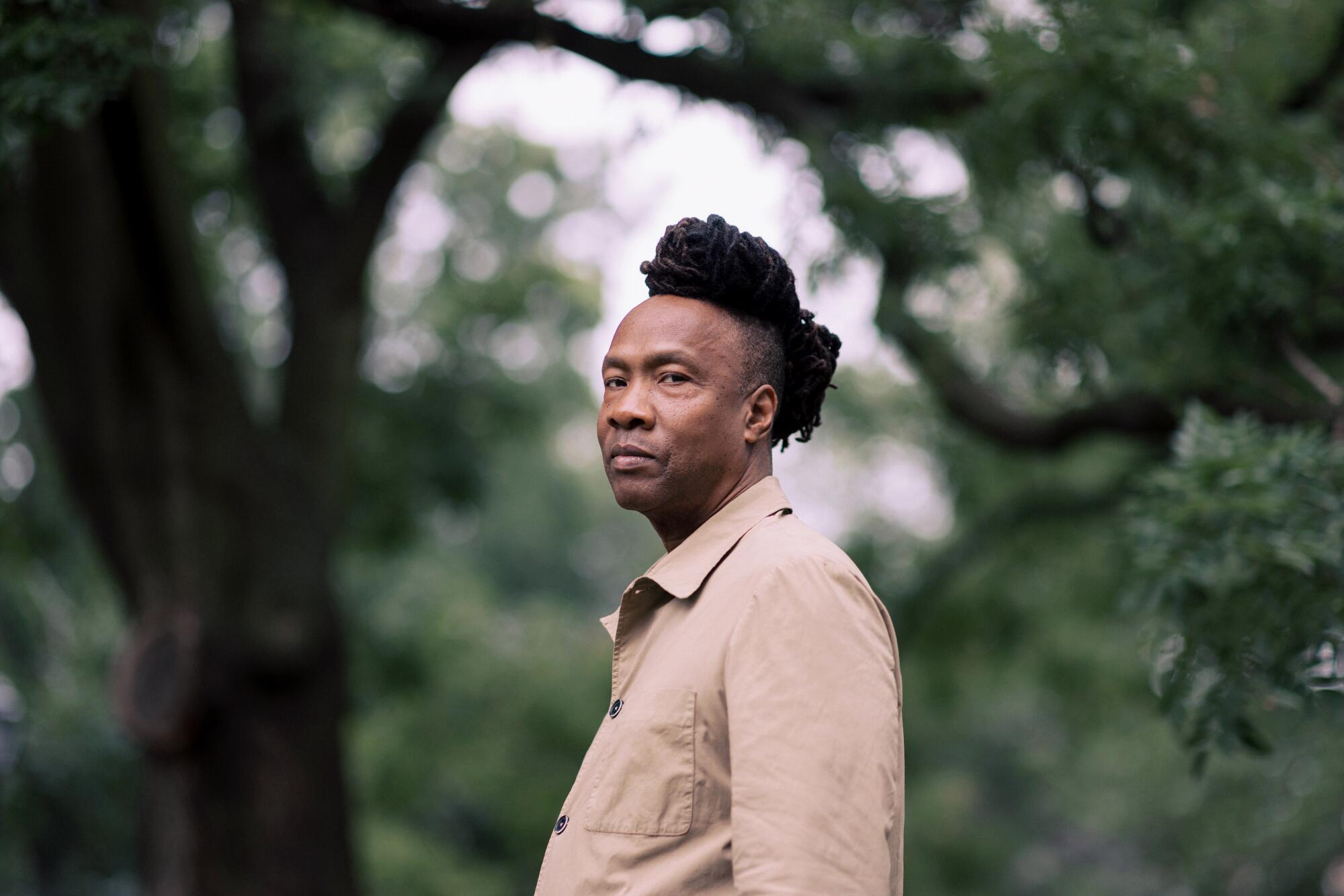
Then, with the Apple TV+ docuseries “The Super Models” (Sept. 20), he takes viewers behind the scenes into the paradigm-shifting rise of Christy Turlington, Naomi Campbell, Linda Evangelista and Cindy Crawford during the ‘80s and ‘90s, as the world-famous quartet share their stories with unprecedented intimacy and depth.
And after that, following its Sundance Film Festival premiere, Williams tells the larger-than-life story of Mexican American professional wrestler Saúl Armendáriz in “Cassandro” (in select theaters Sept. 15 and on Prime Video Sept. 22), with Gael García Bernal portraying the openly gay lucha libre icon. The film marks the director’s narrative debut.
A new HBO film sheds light on the private pain and struggles with fame that Donna Summer, he Queen of Disco, dealt with during her career.
“I’m trying to find my own truth in my own life, and every film I make is deeply personal to me,” says Williams, 60, whose prior subjects include anti-gay American evangelists in Uganda (“God Loves Uganda”), a singer from Zimbabwe with a disability (“Music by Prudence”) and a young man with autism who finds connection in Disney movies (“Life, Animated”). Over videochat on a summer afternoon from his home in Amsterdam, where he splits time between upstate New York, Williams considered how each of his new projects reflects a piece of his own story.
“Stamped” was a search for understanding of the racism he’d known firsthand, and had to unlearn (“It was an education for me,” he says). “The Super Models” took him back to his own formative time in 1980s New York City. “Cassandro” brought unexpected catharsis in the macho world of lucha libre, perhaps the last place he expected to find it. “My work is about telling the stories of underdogs, of people who are fighting to find their voice,” he says.
Chatting from his sleekly appointed kitchen, one of the many places he works on the go from around the world, Williams smiles with easy warmth and curiosity. But how is he not exhausted by his extraordinary year in projects? “It’s been challenging,” he says with a laugh, “but they’re all completely different. That’s what I love.”
Excavating the ‘origins of racist ideas’
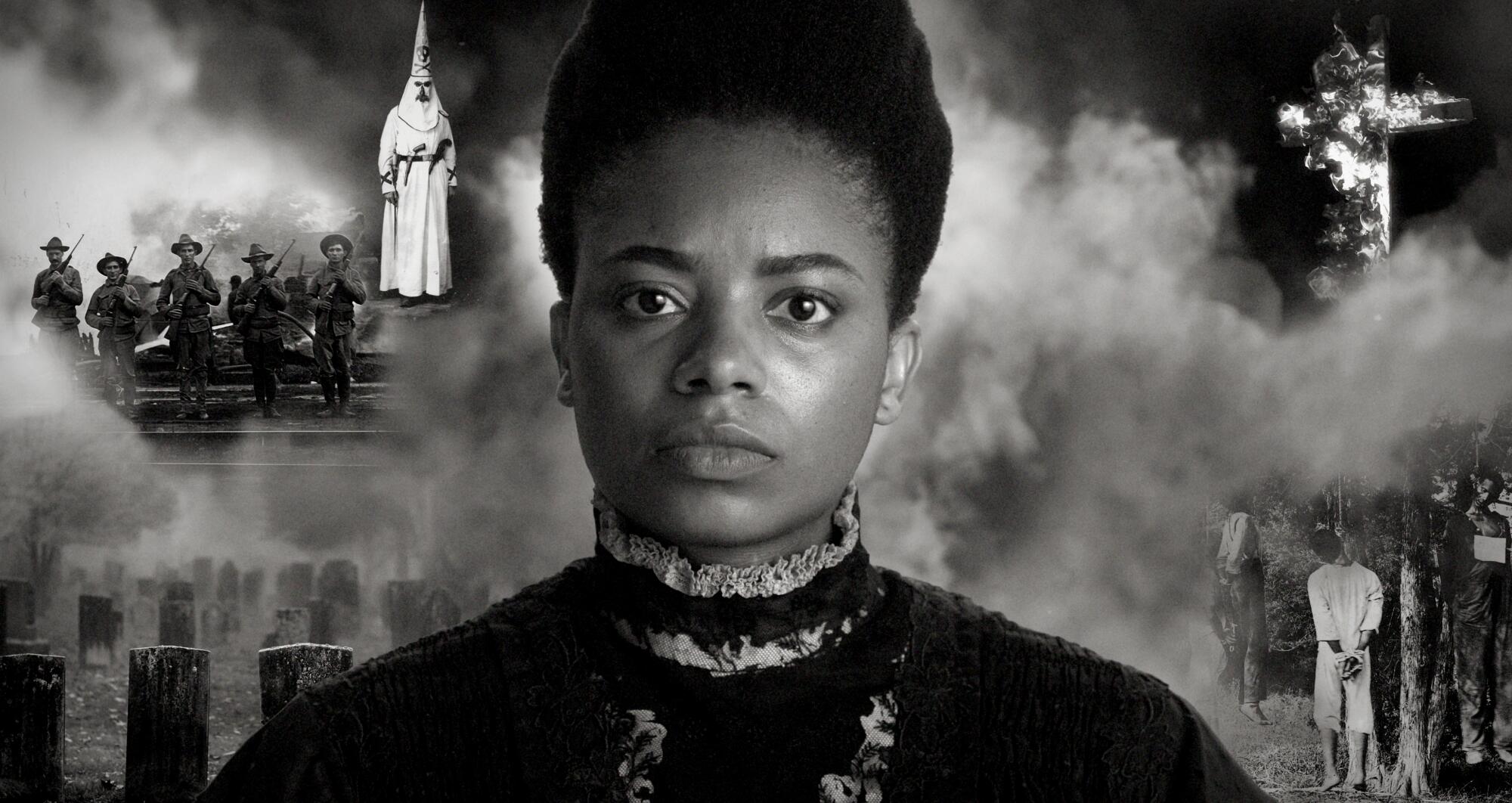
The three-year journey to make “Stamped From the Beginning,” which Williams produced and directed, began with an existential anguish he’d come to understand was woven into the fabric of America itself. Like many others during the Trump presidency and especially after the 2020 police murder of George Floyd, Williams was searching for answers amid the trauma of anti-Black violence. Kendi’s 2019 bestseller “How to Be an Anti-Racist” surged in popularity, leading readers, including Williams, to his earlier 2016 National Book Award winner “Stamped From the Beginning: The Definitive History of Race in America.”
“While ‘anti-racism’ became a term in America during George Floyd, what was so fascinating about ‘Stamped From the Beginning’ is that I gained an understanding of the origins of racist ideas and how they morph, how they affect us and how they turn into policy and pop culture — all these things that infect our brains, our minds, and change the way we think about Black people,” says the filmmaker. “I myself had been a victim of that. I believed a lot of racist ideas about myself and my own people.”
Ibram X. Kendi joins the L.A. Times Book Club to discuss “How to Raise an Antiracist.”
For his production company One Story Up, he’d executive-produced the 2020 HBO television special “Between the World and Me,” based on author Ta-Nehisi Coates’ book of the same name. He saw similar potential in “Stamped” and persuaded Netflix to option it. Then came the challenge of turning the acclaimed 600-page book into a 90-minute film that was entertaining as well as accessible for a global audience.
“‘Stamped’ was about my own journey to understand the negative feelings I have about myself and that other people have about me as a Black American,” he says. “It’s really about understanding my life as a Black American, making sense of that and putting that into a film.”
‘Stamped’ was about my own journey to understand the negative feelings I have about myself and that other people have about me as a Black American.
— Roger Ross Williams
Written by collaborator David Teague (“Life, Animated”), the film blends eye-catching techniques to bring defining moments in U.S. racial history to urgent life; one reenactment anachronistically sets Bacon’s Rebellion of 1676 to Public Enemy’s “Welcome to the Terrordome.” Williams likens the film to a time machine, illustrating how the past isn’t really past: “Even though we’re talking about history, it needs to feel contemporary, it needs to feel modern, it needs to feel now.”
Another creative choice is no less intentional: Apart from the author, all the expert academics and historians interviewed in “Stamped” are Black women, a rebuke of the lack of inclusivity still common across the documentary industry. “I don’t want to hear from the white male historian,” says Williams. “I don’t want to hear even from male historians, because it is Black women who fought on the front lines and carried the burden of this work since the beginning of slavery.”
Executives pushed back, he recalls, arguing that it would limit the appeal of the project, before he ultimately won out. The result: testimony that feels rooted in lived-in intimacy.
“I kept saying to them, Tell me about your experience,’ ” says Williams. “This is personal to you. This is why you do this work. Don’t give me the academic spiel — talk to me as a Black woman to a Black gay man.”
Kindred spirits coming of age in NYC
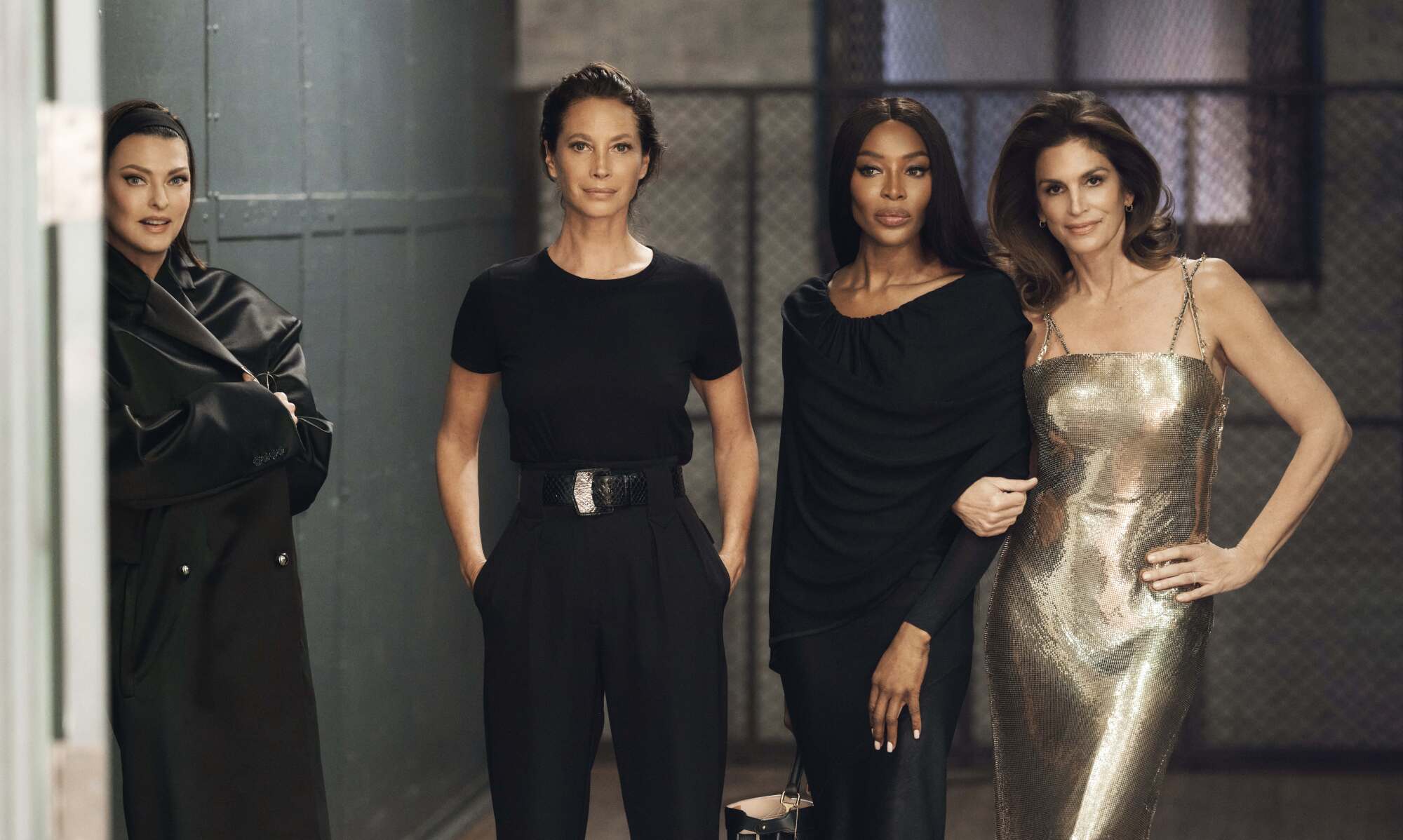
A radical re-centering of women also anchors Williams’ approach to his four-part “event” docuseries “The Super Models,” co-directed by Larissa Bills and executive-produced by Brian Grazer and Ron Howard. The women in question, of course, hardly need introduction. They’ve been on a first name basis with the world for decades: Cindy. Naomi. Christy. Linda. The original supermodels.
We know their famous faces, their genetically blessed curves, their seminal fashion campaigns and how much money they’d get out of bed for. “Their stories have been told through the media, through soundbites, through the press,” says Williams. “But we didn’t really know who these women were.”
“The Super Models” takes a far more humanizing approach, Williams posing a question early in the first episode: “How do you define the word ‘supermodel’?”
“You see our photo, our image, so you feel that you know us,” answers Campbell. “But there’s no words that go with our pictures.”
Williams instead reveals the humble origins, private battles and hard lessons that shaped their parallel ascents to stardom. “They weren’t born supermodels,” says the director. “They were born Cindy, a farm girl in Illinois, and Christy, the horse girl, Naomi in the projects in South London and Linda in Canada. They were shy and they had to find their voices.”
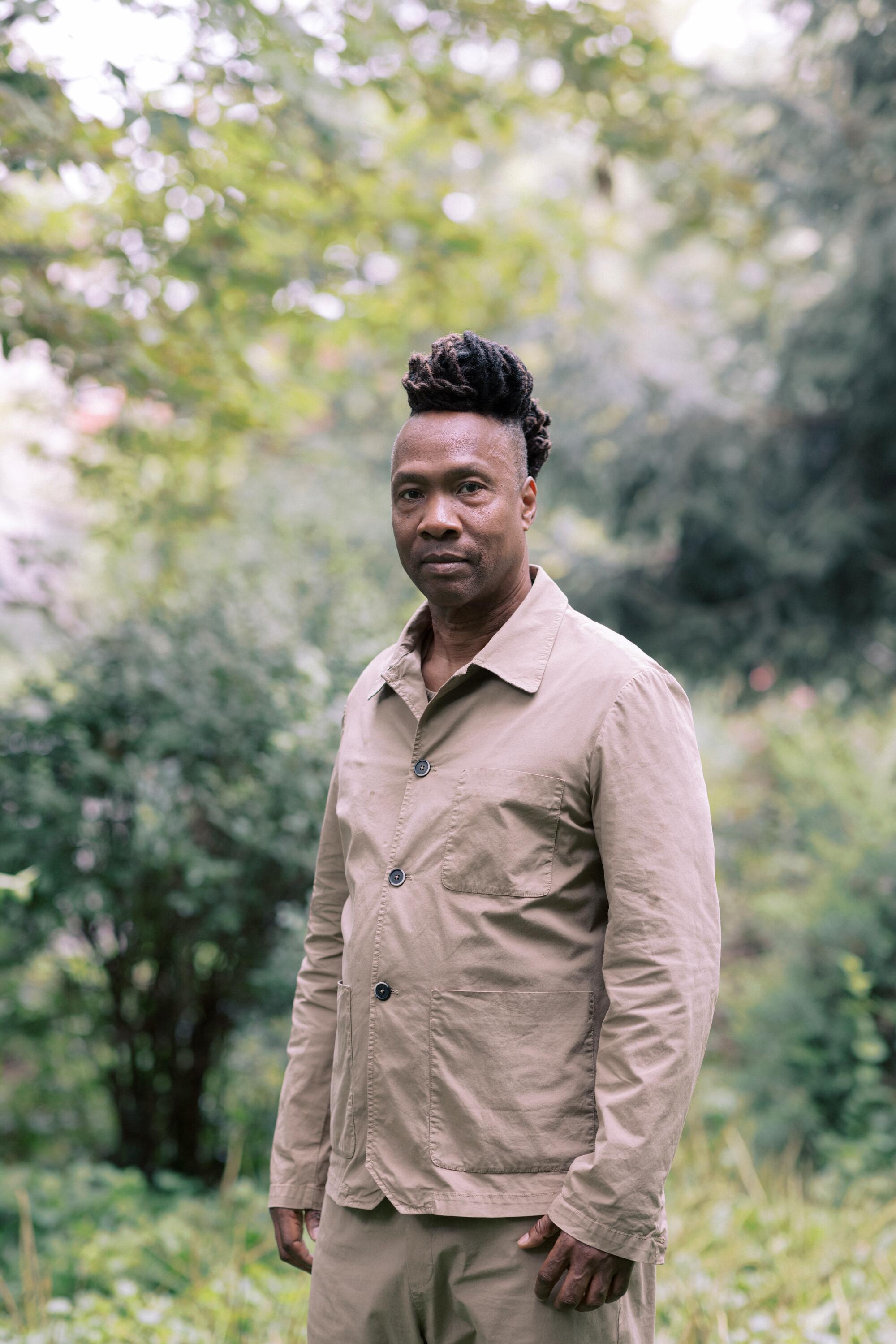
He traces their intersecting journeys to a bustling late-1980s New York City, electric with possibility. Williams remembers as much, because he was there too. Attending NYU and working at Manhattan’s Palladium nightclub, playground of the famed and fabulous, he was finding himself in the city, only a few years older than the Big Four.
“I was free from the religious oppression of the Black faith-based community I grew up in,” says Williams, who was born and raised in Easton, Pa., sang in the gospel choir in his family’s Baptist church and spent summers with relatives in Charleston, S.C. “I was free to go wild in the nightclubs and be openly gay and be this wild child club kid. ... I grew up with these women. As they were all coming of age, I was coming of age. And they have a similar story that had never been told.”
All four of the supermodels also have executive-producer credits on the project, which touches on fashion’s predatory men who wielded power over their lives and careers. (In some cases, the wielding was too close for comfort.)
“They were lucky — it’s a rough industry and they navigated and made it through and not just survived it, they conquered it,” says Williams. “Especially back then, the fashion industry was known for exploiting women. These women have transcended that, and they should have ownership over their stories.”
From documentaries to drama
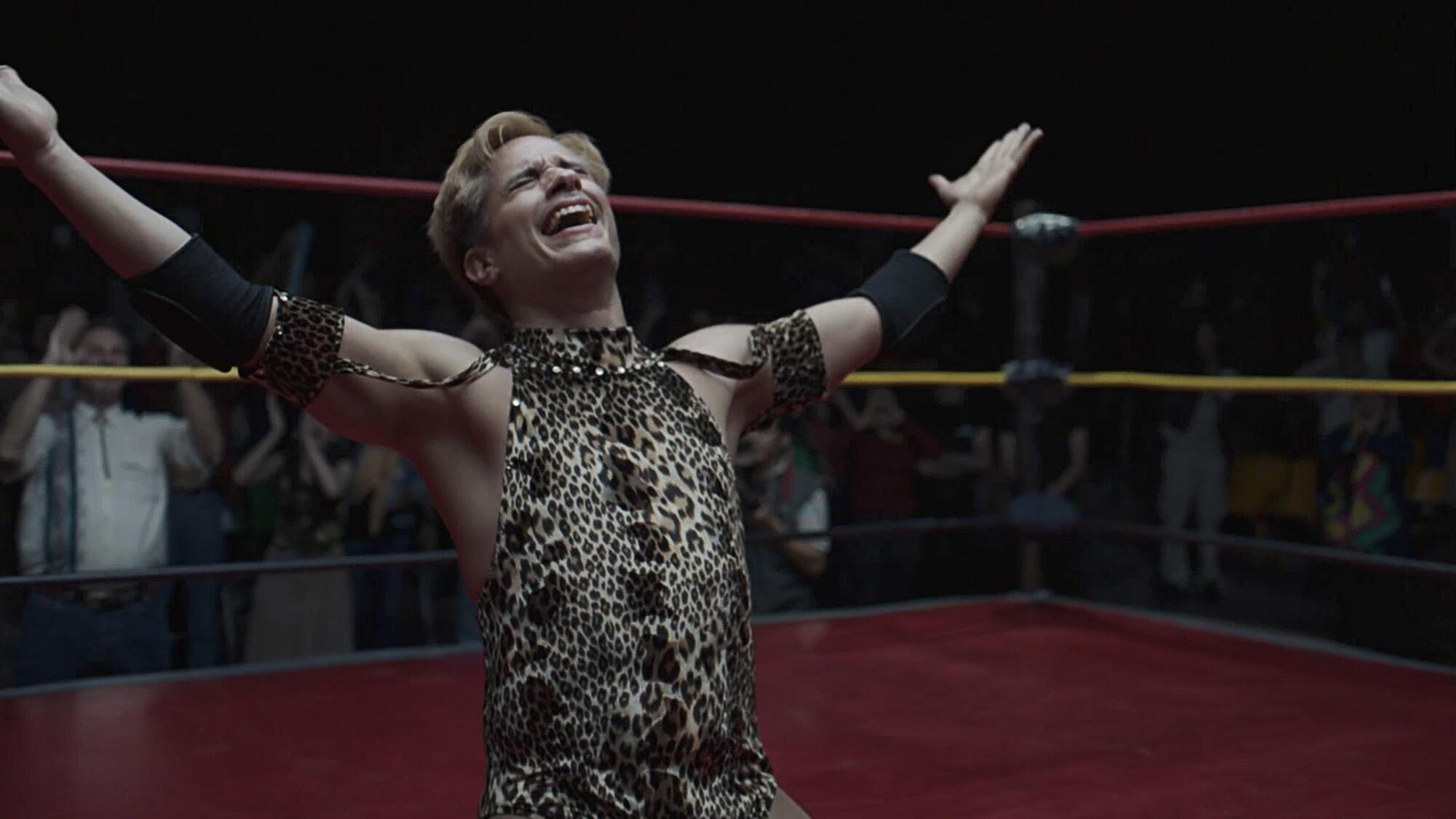
Despite his awards and accomplishments, Williams still remembers walking into his first Academy of Motion Pictures Arts and Sciences meeting after joining the board of governors in 2016. “It was mostly white, male, old school, established Hollywood — I was so intimidated,” he says. Channeling that outsider feeling into resolve to disrupt the status quo, he subsequently pushed the doc branch to reach gender parity and add more BIPOC and international members while his own output established him as a force in the nonfiction world.
Hulu’s “The 1619 Project” and HBO Max doc “Master of Light” — both produced through his company One Story Up, founded in 2018 with Geoff Martz to help other filmmakers (“all the little Rogers”) finance socially driven projects — are now contending for several Emmys. And with Hollywood studios calling, Williams is not wasting the chance to bring others to the table along with him. But his drive to give voice to others has deep, personal roots.
“It comes from being a total outsider my whole life,” he says, offering the kind of vulnerability he seeks on the other side of the camera. “It comes from growing up in the Black church, where I was told I was a sinner and I didn’t belong. I’m fueled by the rejection that I received from the church and my community and even my family. That’s something I learned as an artist: if I use the thing that’s most painful to me as fuel for my art, then I can’t go wrong.”

Williams had been producing for major networks and studios for nearly three decades before his Oscar nod for 2017’s “Life, Animated” kicked his industry momentum into higher gear. And after a career in nonfiction, Williams was also ready to face his biggest artistic fear: directing a drama. “I was terrified of actors,” he admits. “I’m used to working with real people.”
Then, inspiration for what would become his first scripted feature struck when he met blond-coiffed Armendáriz, a gay exótico wrestler known for his glamorous ring persona Cassandro, to film him for a 2016 documentary short.
Williams arrived at the wrestler’s home in El Paso and began interviewing him. “When Cassandro came in the room there was a charisma, a power, a beauty,” he remembers. “I was so inspired by his story. And it was that day I turned to Cassandro and I said, ‘You’re my first fiction film.’”
I turned to Cassandro and I said, ‘You’re my first fiction film.
— Roger Ross Williams
He and co-writer Teague spent time with the “Liberace of lucha libre,” learning about his life growing up in El Paso and Ciudad Juárez and his long-strained relationship with his father. “We came to the conclusion that he needed to accept himself at the end, that it was about self-acceptance,” says Williams. “I had been chasing acceptance from my father my whole life, who didn’t accept me for being gay, so it was very personal to me.”
Gael García Bernal signed on to star as Armendáriz and executive-produce the film, with Raúl Castillo, Perla De La Rosa, Roberta Colindrez and Bad Bunny co-starring. Mentors at the Sundance Labs, including Robert Redford, helped Williams conquer his insecurities about leaping from nonfiction storytelling.
Shortly before filming began in 2021, Williams and production designer J.C. Molina arrived in El Paso for a location scout. Cassandro happened to be fighting that night. The first time Williams had seen him wrestle, years earlier, the luchador entered the ring to a rendition of “I Will Survive.” “Kids were hugging him and people were handing him their babies to kiss and everyone was singing ‘I Will Survive’ in this macho world,” remembers Williams. “I started to weep. I was so overcome.”
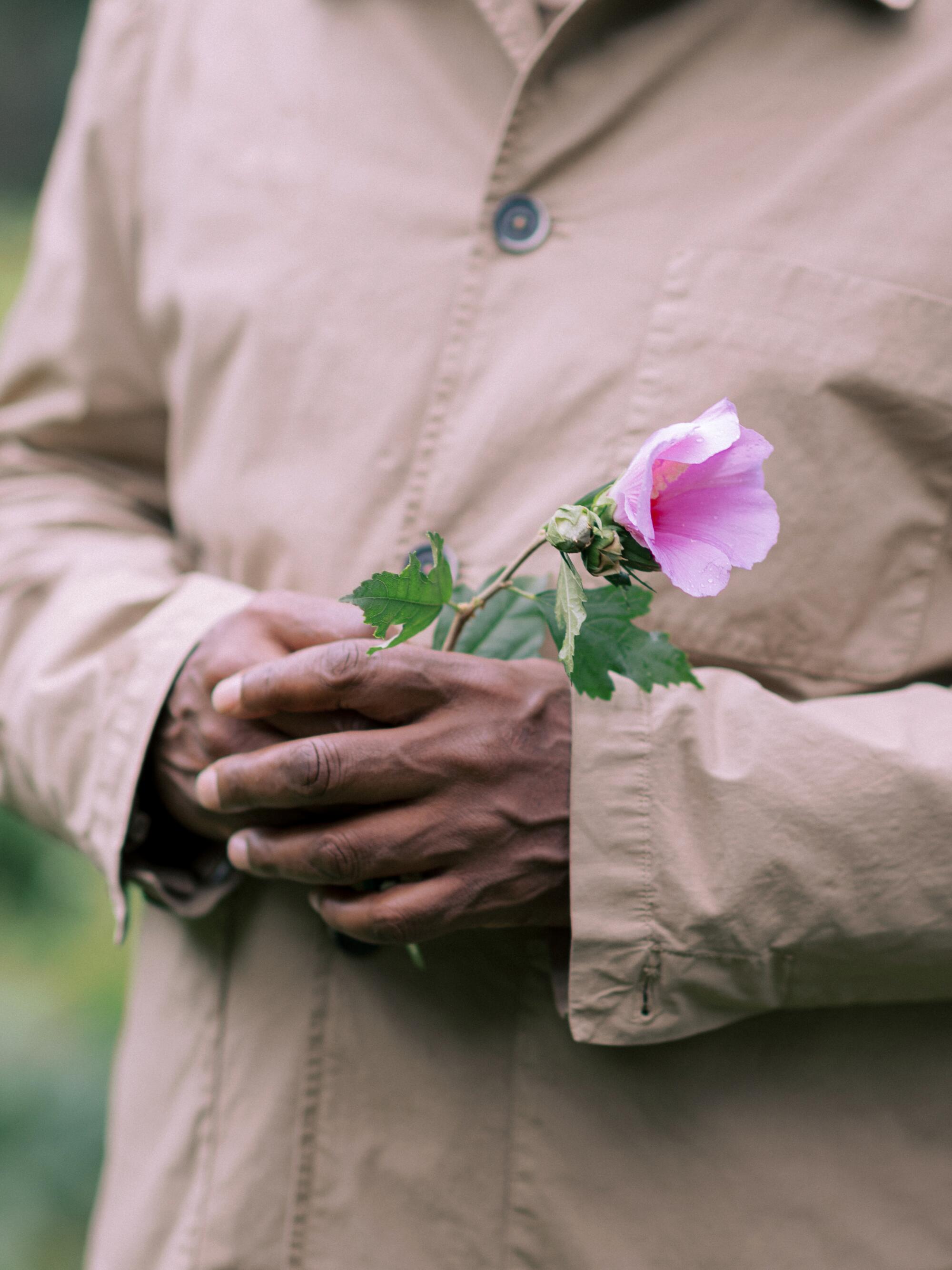
Attending another Cassandro bout right before filming, the director saw his production designer experience the same emotional reaction. “J.C. lost it and he started crying hysterically, and then I started crying,” he says. “We realized how powerful it was for us as gay men and how inspiring Cassandro was for us.”
Two weeks later, Armendáriz suffered a stroke that left him incapacitated on his right side and unable to speak.
While “Cassandro” takes creative license with certain aspects of the luchador’s life, the “I Will Survive” sequence, in which a moment of trepidation becomes one of triumph, is one of the film’s most poetic scenes — Williams’ way of honoring the truth of Cassandro’s legacy. During filming, Armendáriz visited the set with family including his father, and when the film was done, Williams screened it privately for him, watching his reactions.
“When his mother came on-screen, he screamed, ‘Mama!’ When he’s triumphantly on the ropes [on-screen], he stood up and raised his arm, mimicking the action in the movie,” says Williams. “He was acting out the movie in front of me in real life. It was the most incredible experience.”
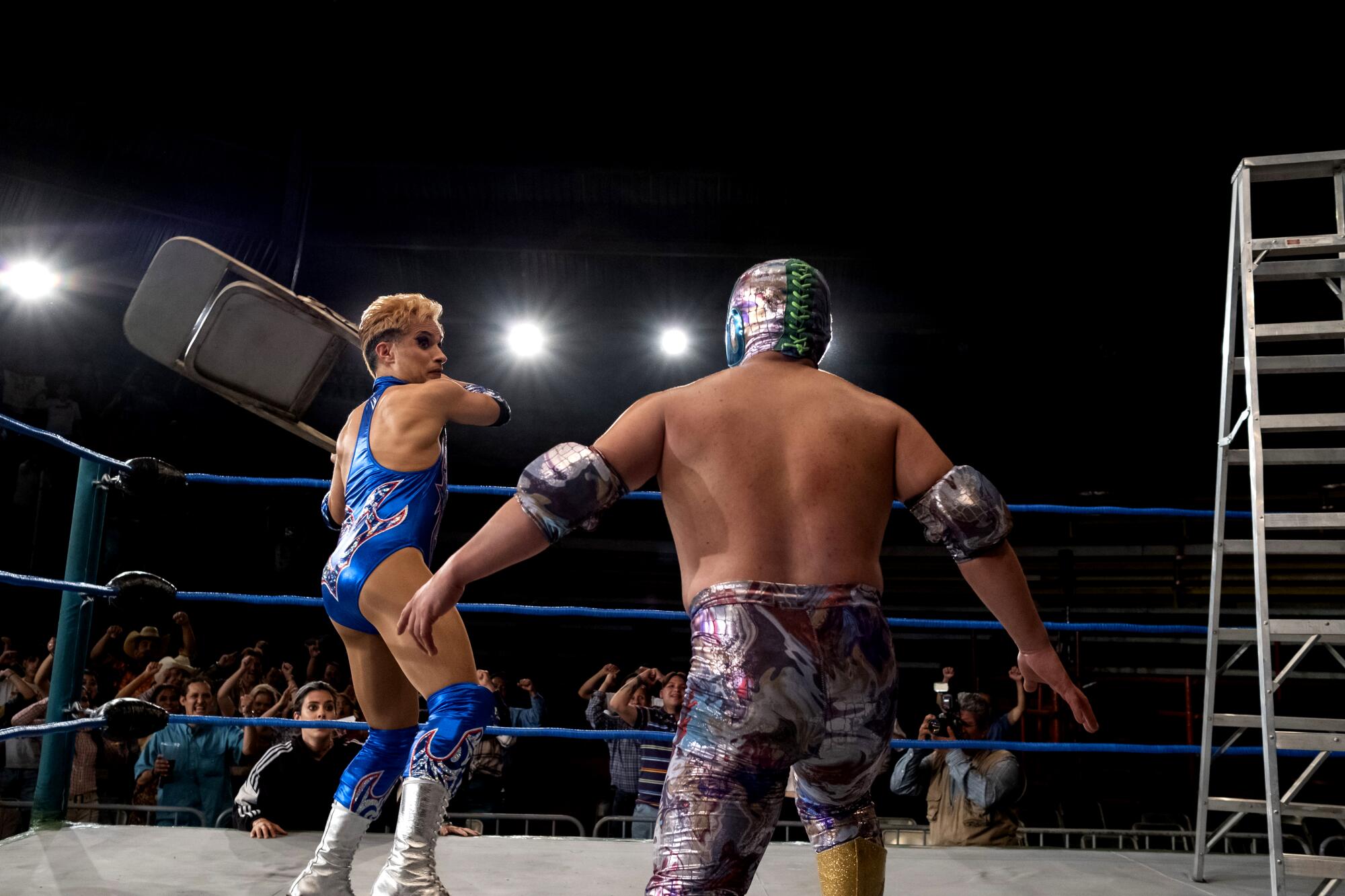
In January, Armendáriz stood in an emotional embrace with the filmmaker at the film’s Sundance premiere. Armendáriz told The Times via email he felt an instant trust and connection with the director, and was especially moved by the film’s depiction of his bond with his mother. “I got emotional watching the story,” he wrote. “I completely identified with it.”
Williams isn’t done with 2023; he also executive-produced the upcoming HBO docuseries “Savior Complex,” about an American missionary in Uganda accused of medically treating children without training. By his own admission, he never stops working — and whether that’s directing his own fiction and nonfiction projects, or helping others get their shot, the work is far from over.
“I’m so grateful to be in the position I am in this business, to be able to create series, documentary features, now scripted narrative features — to be able to do it all,” he says. “That’s a privilege, and I want to extend that privilege to everyone like me. I want them all to have the same opportunities that I have.”
More to Read
Only good movies
Get the Indie Focus newsletter, Mark Olsen's weekly guide to the world of cinema.
You may occasionally receive promotional content from the Los Angeles Times.

